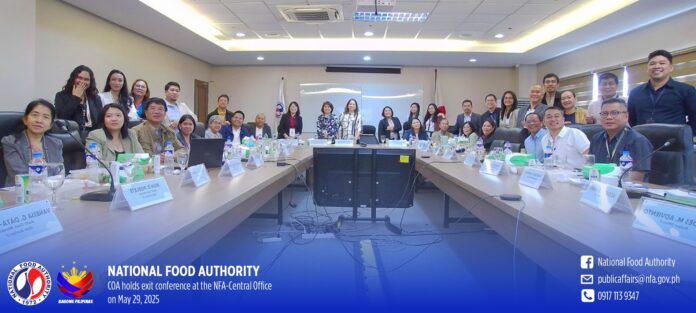In a rare commendation, the Commission on Audit (COA) has praised the National Food Authority (NFA) for its effective rice inventory management, according to the latest Audit Observation Memorandum (AOM) issued to the Department of Agriculture’s grains agency.
The AOM highlighted the near-optimal rice inventory levels achieved by the NFA in 2024—an effort aligned with President Ferdinand Marcos Jr.’s directive to strengthen national food security amid increasing risks posed by climate change and natural disasters.
“We commend the management in maintaining the required buffer stock to almost optimal level of rice inventory that significantly mitigated the risk of not meeting the country’s food security in cases of calamity and emergency situations,” read the AOM, signed by audit team leader Abdelghani Sultan.
Under the leadership of Agriculture Secretary Francisco P. Tiu Laurel Jr., who chairs the NFA Council, and Administrator Larry Lacson, the agency met the mandated buffer stock requirement of 300,000 metric tons (MT)—a long-standing challenge flagged in previous audits.
COA attributed the turnaround to “innovative strategies and approaches,” especially the rollout of the Price Range Scheme (PRICERS).
“We are pleased and thankful for this rare commendation from COA. It’s a strong vote of confidence in our efforts to ensure farmers earn fair returns for their hard work as well as ensuring sufficient rice supply,” said Secretary Tiu Laurel.
To better compete with private traders, the NFA Council last year raised its palay buying price to a range of P17 to P30 per kilo, supporting the administration’s push to improve farmer incomes.
“We aim to sustain our aggressive palay procurement especially in areas where palay prices are low and will soon complete repairs of 134 warehouses, which will allow us to buy even more palay at fair prices,” Lacson said.
NFA rice stocks now support the P20 rice program, which President Marcos aims to sustain until the end of his term in June 2028.
Launched in April 2024, PRICERS enables weekly price adjustments to match market conditions. With competitive rates—P23 to P30 per kilo for dry palay and P17 to P23 for fresh—the scheme encouraged farmers to sell to the NFA.
As a result, the agency reached 90 percent of its 495,000 MT procurement target for 2024. This success was supported by the Ugnayan campaign, PALLGU partnerships, expanded mobile procurement, and extended buying hours.
While COA urged the NFA to maintain these gains, the memorandum stands as a significant vote of confidence in the agency’s reformed strategy—marking a clear departure from previous criticisms.







